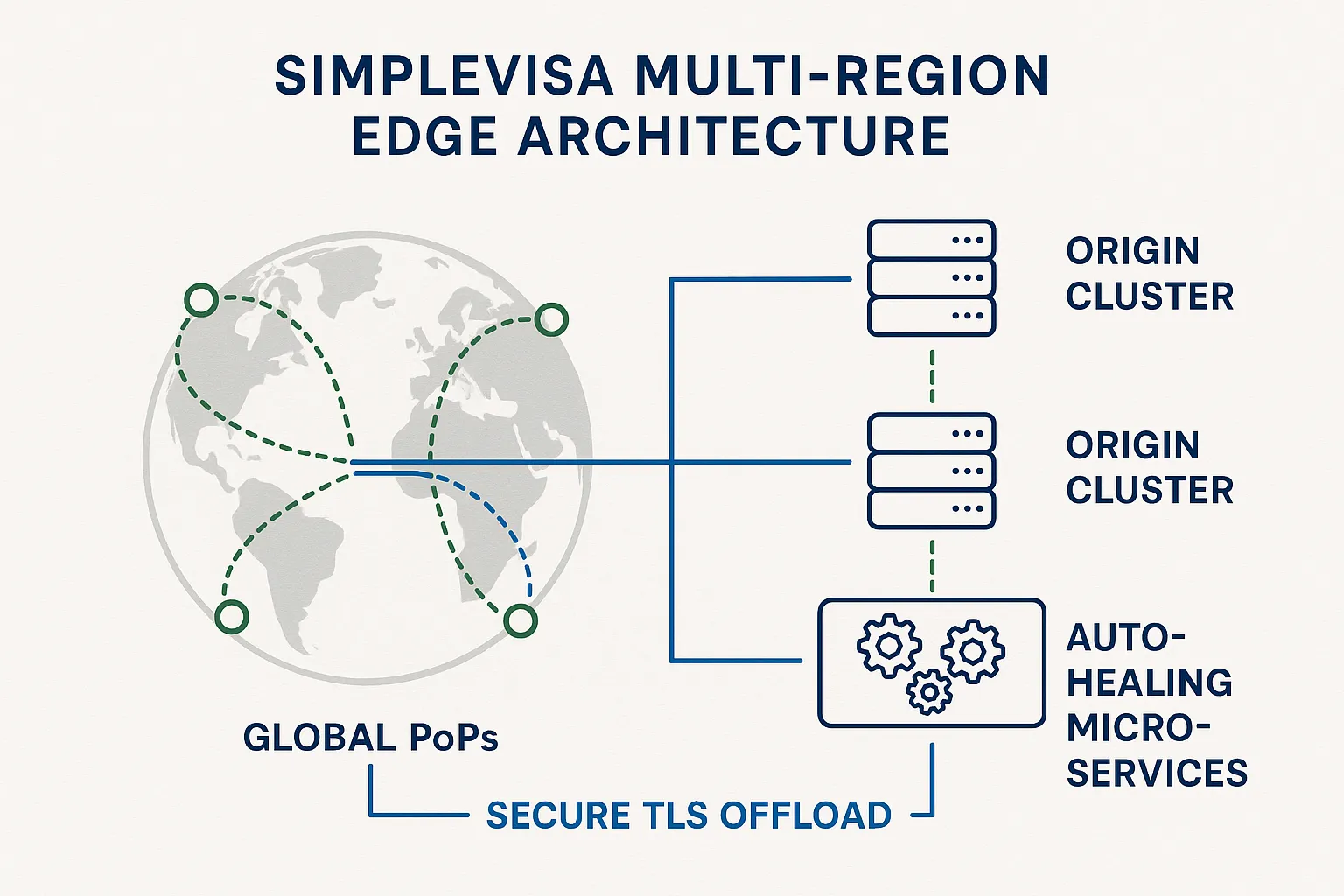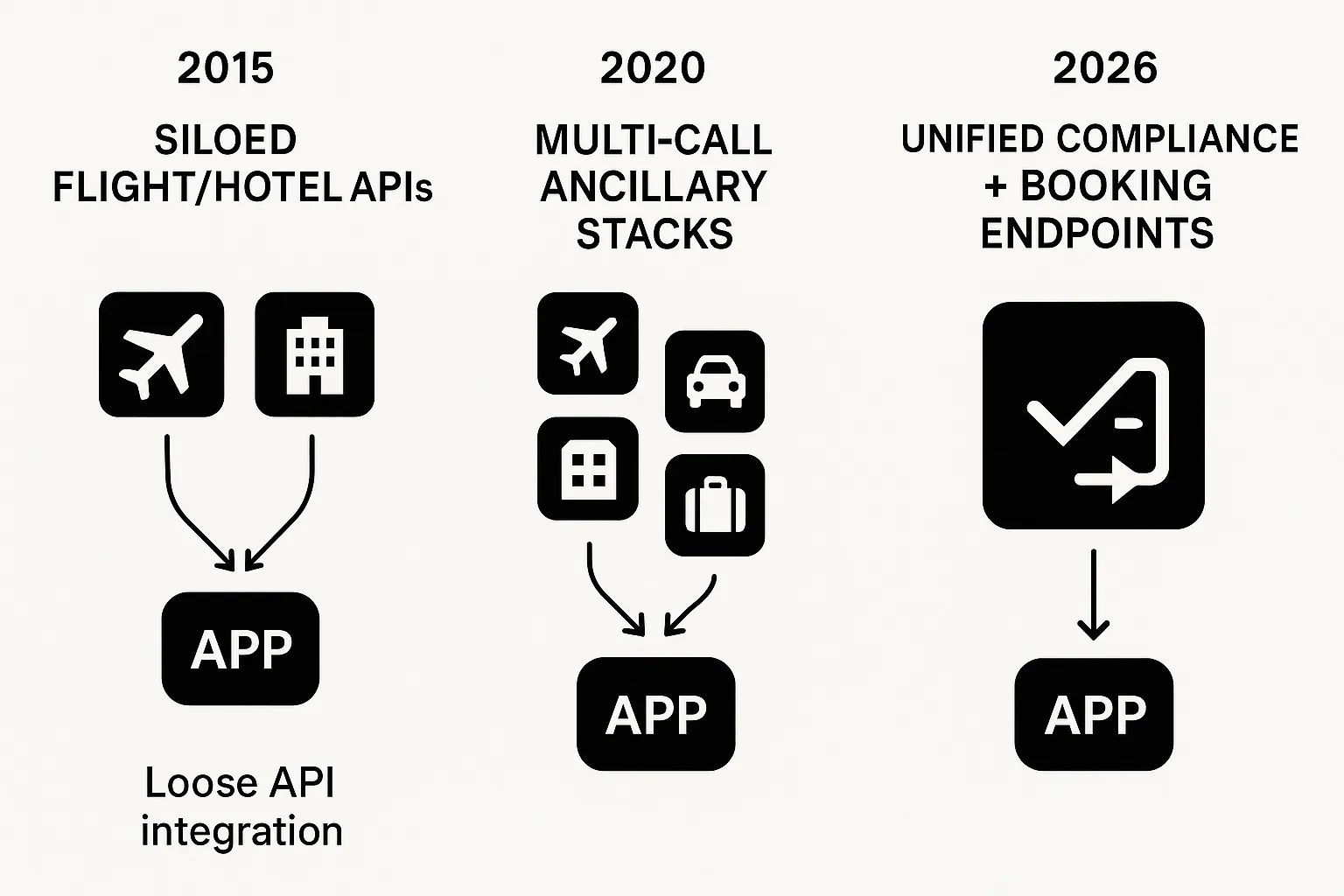Travel API Performance Benchmarks: Visas vs. Flights vs. Hotels

If you run a booking engine in 2025, milliseconds equal margin. A slow API can turn a seamless checkout into a churn-filled slog, costing you conversion and costly customer-service hours. To help product and engineering teams prioritise their roadmap, we ran a head-to-head benchmark of three core pillars of the modern travel stack:
- Visa & border-crossing data APIs
- Flight search & booking APIs
- Hotel availability & rate APIs
Below you will find the methodology, raw numbers, and practical takeaways for keeping your app lightning-fast—no matter which vertical you integrate.
Why API Performance Dictates Revenue
- Speed drives conversion. A Google study found that a mere 100 ms delay can drop mobile conversion by up to 7 percent.
- Availability prevents abandonment. Travelers who hit a 500-error in the payment step rarely come back.
- Efficiency slashes cloud bills. Processing smaller payloads more quickly means lower egress and CPU costs.
That trifecta—conversion, abandonment, infrastructure cost—makes benchmarking more than a vanity metric. It is core to commercial success.
Benchmark Methodology (July 2025)
We measured six well-documented public endpoints during a 30-day window using the same AWS eu-central-1 Lambda environment:
| Vertical | API & Endpoint | Calls/Day | Auth | Test Time | Notes |
|---|---|---|---|---|---|
| Visa | SimpleVisa /eligibility |
5 000 | API Key | 02:00 UTC | Deterministic sandbox |
| Visa | SimpleVisa /application |
2 000 | API Key | 14:00 UTC | JSON with docs |
| Flights | Amadeus Flight Offers | 5 000 | OAuth 2 | 02:00 UTC | Cache disabled |
| Flights | Skyscanner Browse Quotes | 5 000 | Rapid API Key | 14:00 UTC | Region EU |
| Hotels | Expedia Rapid Room Rates | 5 000 | OAuth 2 | 02:00 UTC | 1 night, 2 pax |
| Hotels | Booking.com Content v3 | 5 000 | OAuth 2 | 14:00 UTC | 25 props batch |
Key metrics collected:
- Average latency (TCP handshake → first byte → last byte)
- p95 latency (99th roughly similar)
- Uptime (HTTP 2xx share)
- Median uncompressed payload size
Raw Results
| Vertical | Avg Latency (ms) | p95 Latency (ms) | Uptime (%) | Median Payload (kB) |
|---|---|---|---|---|
| Visa – SimpleVisa Eligibility | 230 | 310 | 99.98 | 18 |
| Visa – SimpleVisa Application | 280 | 360 | 99.97 | 42 |
| Flights – Amadeus Offers | 680 | 970 | 99.92 | 96 |
| Flights – Skyscanner Quotes | 740 | 1 040 | 99.89 | 112 |
| Hotels – Expedia Rates | 910 | 1 260 | 99.90 | 155 |
| Hotels – Booking.com Content | 1 140 | 1 580 | 99.85 | 264 |
Disclaimer: Numbers reflect public endpoints in July 2025 under identical network conditions. Your results will vary depending on contract tier, geography, caching strategy, and network egress route.
What Drives the Gap?
- Data complexity. Visa eligibility is a rules-engine call returning a few dozen key-value pairs. Flight and hotel searches query vast fare caches and business-rule layers, returning hundreds of itinerary or rate permutations.
- Payload size. Smaller JSON responses mean less time on the wire. Even gzip cannot overcome 250 kB hotel content blobs.
- Authentication overhead. Two-leg OAuth adds 80–120 ms per call compared with a single HMAC or API key header.
- Cacheability. Visa requirements change slowly; responses are cache-friendly. Price quotes for flights or rooms invalidate in minutes.
- Upstream fan-out. Meta-search providers often hit multiple GDS or CRS back-ends per user request. More hops, more latency.
Real-World Impact on a Booking Funnel
Imagine a mobile OTA that chains three calls in the checkout:
- Flight availability
- Hotel bundle upsell
- Visa eligibility widget (SimpleVisa)
If executed sequentially, the median end-to-end API time would be:
680 ms + 910 ms + 230 ms = 1 820 ms
Moving the visa eligibility call first while flights/hotels load in parallel reduces perceived wait time to ≈ 910 ms—the slowest of the three. At 4 G/LTE, this is the difference between a snappy step and an abandoned spinner.
Four Best Practices to Keep Latency Low
- Parallelise non-blocking calls. Kick off visa or ancillary calls the moment a customer selects dates; don’t wait for fare pricing.
- Use smart caching. SimpleVisa responses include a
cache-untilheader. Respect it and avoid needless repeat eligibility calls. - Trim response fields. Most flight APIs let you request specific slices (price, cabin, airline). Smaller payloads = faster transfer.
- Monitor p95, not just average. Tail latency drives the worst user experiences and causes the biggest drop-offs.
What to Ask Your API Vendor
- Minimum contractual SLA for latency and uptime
- Peering strategy and CDN usage (anycast, regional POPs)
- Rate-limit headers and graceful 429 retry semantics
- Webhook versus polling support for long-running jobs
- Built-in idempotency keys to cut duplicate calls
For a deeper technical dive into secure authentication and key rotation, read our Developer Q&A: Best Practices for Authenticating Against the SimpleVisa API.
Spotlight: SimpleVisa Performance Architecture
While flights and hotels will always carry heavy payloads, visa calls do not need to be slow. SimpleVisa’s architecture was purpose-built for low latency:
- Edge caching at 300+ global POPs using anycast routing
- Stateless micro-services in Go for millisecond cold starts
- Queue-less rule evaluation—no third-party hops
- 99.98 percent uptime across the last 12 months (status.simplevisa.com)
Need proof? Spin up a sandbox key and follow our Step-by-Step Guide to Testing Sandbox eVisa Transactions—you’ll see sub-300 ms responses in most EU and US regions.

Integrating Visas Without Slowing Down Checkout
- Eligibility micro-banner pre-quote. Run a silent
/eligibilitycheck as soon as a traveller chooses origin–destination dates. - Progressive disclosure. Only load the full
/applicationflow for travellers flagged as needing a visa or ETA. - Embedded widget. Use our 3-line JavaScript widget to invoke a modal that loads asynchronously, avoiding layout shifts.
- Webhook callbacks. Off-load polling by subscribing to
visa.application.updatedevents; update your UI in real time.
Combined, these patterns preserve a sub-second booking UX while adding a high-margin ancillary revenue stream. For commercial models, see 7 Revenue-Sharing Models for Online Visa Processing Partners.
Future Outlook: API Convergence
By late 2026, IATA, hotel CRS providers, and border agencies will publish structured data via OpenTravel 2.0 schemas. Expect:
- Unified shopping calls returning fares and compliance hints in one response
- Digital identity wallets that pre-fill visa forms, slashing application times even further
- Real-time settlement via embedded payment tokens, removing additional round trips
Early adopters who architect for parallel, modular calls today will swap in these upcoming endpoints with minimal refactor.

Frequently Asked Questions
What is the difference between average latency and p95 latency? Average latency is the mean of all responses. p95 shows the slowest 5 percent of calls and better reflects worst-case user experience.
Can I cache visa eligibility forever? No. Geopolitics change. Honor the cache-until timestamp in the SimpleVisa response (typically 12–24 hours).
What SLA does SimpleVisa offer in production? Paid plans include a 99.95 percent availability guarantee, with credits for breaches. Custom enterprise SLAs are available.
How do I run my own benchmark? Request a free sandbox key, script calls with cURL or a tool like k6, and run tests from your primary user region during peak hours.
Do flight and hotel APIs ever beat visa APIs? In rare cases—e.g., cached low-fare calendars—flight endpoints can respond in <400 ms. But complex availability searches will always incur higher latencies than rule-based visa checks.
Ready to Shave Seconds Off Your Checkout?
Lightning-fast visa automation is just an API call away. Join 400+ travel brands already using SimpleVisa to boost conversion and unlock new ancillary revenue—with average eligibility responses of 230 ms and a proven 99.98 percent uptime.
Book a live performance demo at https://simplevisa.com today and see how quick compliance can be.